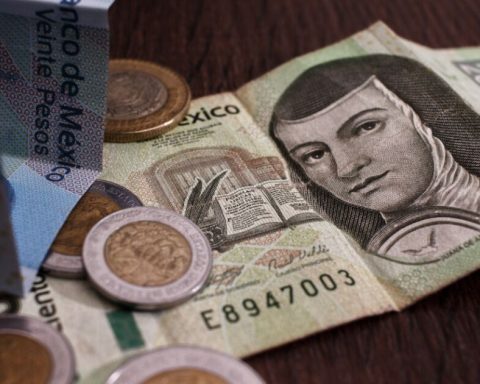Laura Poy Solano
Newspaper La Jornada
Sunday May 29, 2022, p. 3
Teachers and directors of basic education consider that the delivery of school breakfasts has been one of the public programs with the greatest impact in the classroom, but they blame its lack of universal coverage for students in conditions of poverty. It has been a strategy that faced stages of frank abandonment and stagnation
both state and federal governments.
And this is the case, they say, with the SEP’s Full-Time Schools Program (PETC), because after its disappearance in 2021 left in uncertainty about 12,000 schools with dining room service and hot food for more than a million students
.
Consolidating the delivery of school breakfasts in Mexico took decades, a substantial increase in its resources and the participation of the three levels of government to reach the most remote schools in the country, educators admit.
Esther Rojas, a normalist teacher in Tarimoro, Guanajuato, narrates that in her childhood, in the state of Mexico, “the times I tried milk it was with school breakfasts. At home we were seven siblings, I was the one in the middle. You got up at dawn for the firewood, to carry water, and if things went well for you, tortillas with salt and white dough atole was all they gave you to go to school.
When the school breakfasts arrived, it was quite an event. My mother believed that they were not going to give us to the poorest, because it cost 20 cents. She gave you a cardboard to mark 20 breakfasts a month. Five a week. I didn’t miss any in my primary. Sometimes we had the 20 cents, sometimes we didn’t, but they always gave me.
In turn, Francisco Bravo, primary school director and educator with more than 30 years of service, recalls: In my career I have seen many children with the illusion of receiving their school breakfast. And even today, in many schools, it is a reality that not all children eat breakfast. Accessing food makes a difference. A child who does not eat cannot learn
.
The impact of the school breakfast program was diverse. At the beginning of the 60s of the last century, it caused the Tetra Pak company to install its first plant outside Sweden in our country, to meet the demand of the then National Institute for Child Protection.
This agency, which would become the DIF in 1977, was responsible for the rations integration plant where school breakfasts, consisting of ultra-pasteurized milk and other fortified foods, were packaged.
Carlos Montaño, a primary school teacher in Yuriria, Guanajuato, says that when he was studying primary school in Mexico City in the 1960s, he also received these breakfasts.
“They took us to some places that served as school breakfast rooms. They gave us a quart of milk, bread and fruit. It was an important program for the kidsWe were from popular classes. I had to live in the Romero Rubio neighborhood. We were people who survived, and the school breakfast played an important part, at least a complete meal was guaranteed, with milk and fruit, which the children of that time did not consume at home”.
But it was not until 1989 when the school breakfast program, delivered by the DIF, was extended to other entities, since in addition to Mexico City, Hidalgo, the state of Mexico and Tlaxcala were added. A year later, Aguascalientes was integrated, and in 1991 Guanajuato was included. For 1994, there are 19 participating states.
The program operated centrally until 1997, including its own distribution network. However, the model did not consider regional differences in food consumption, habits and culture. In addition, operating costs were high and inefficient, particularly for the more remote states.
Under the control of the entities, the school breakfast program began a new stage that imposed new challenges, since processed foods predominated and progress in coverage was slow.
It took more than 60 years for the federal government to create, in 2007, with the support of the SEP, another official program that among its central axes included the delivery of school meals, the PETC. However, after more than a decade of operation, only 42 percent of the beneficiary schools had a dining room service.
Strengthen and focus
Unlike what happened with the PETC, with the school breakfast program its strengthening is sought, but in a focused way
affirms Francisco Meza, in charge of the General Directorate of Food and Community Development of the National System for the Integral Development of the Family (DIF).
It reports that in 2021, 775.7 million school breakfasts were delivered in the country, with an investment of 10 thousand 799 million 417 thousand pesos, through the 32 DIF systems in the states.
The goal this year, he says, is to increase coverage, so in the operation of state food programs it was projected to distribute 820 million 972 thousand 46 school breakfasts, with an investment of 13 thousand 962 million pesos.
The municipal governments play a key role in integrating the list of beneficiaries in coordination with the state DIF systems, to which the request must be submitted to include a new school in the program, in addition to the fact that one of the six-year goals is to go from hot to cold breakfasts, and ensure a greater impact on the nutrition of schoolchildren.
In this regard, Meza specifies that in collaboration with the Center for Research in Politics, Population and Health of the Faculty of Medicine of the UNAM, the Evaluation of the Nutritional Status of minors of school age is carried out, with which data on weight, height , health and food, which will allow the targeting of the program.
The progress of the project in terms of severe and moderate malnutrition is reflected in the trends in nutritional status. He assures that despite the covid-19 pandemic and the closure, for almost two years, of schools, severe malnutrition went from 2.21 to 1.39 percent in boys and from 3.24 to 1.16 percent in girls compared to 2018 data
.
According to DIF data, moderate malnutrition decreased from 7.6 to 4.46 percent in boys and from 9.19 to 4.88 in girls, for the same period
. It adds that in order to improve the nutritional status of students, school breakfasts provide an average of 360 kilocalories, which represents 25 percent of the recommended daily intake, according to the official Mexican standard NOM-169-SSA1-1998, for social food assistance to risk groups.
Regarding the progress in the delivery of hot breakfasts, he indicated that last year 65.2 percent were delivered in this modality, and the rest were delivered in its cold modality. The goal, he said, is that at the end of the administration, all the benefited students receive a hot meal at their school, which guarantees access to a greater variety of foods. One of the main challenges, he points out, is to have adequate facilities, which has required the equipping of kitchens in educational centers. For this reason, this year the DIF state systems will be able to dispose of 2 percent of the program’s resources for operating payments, which can be used for materials, supplies and services.

















